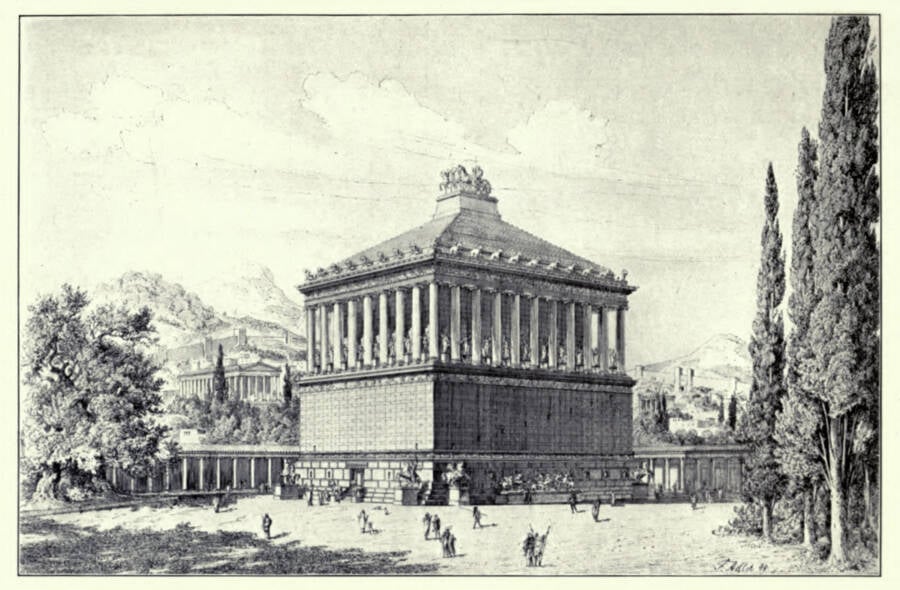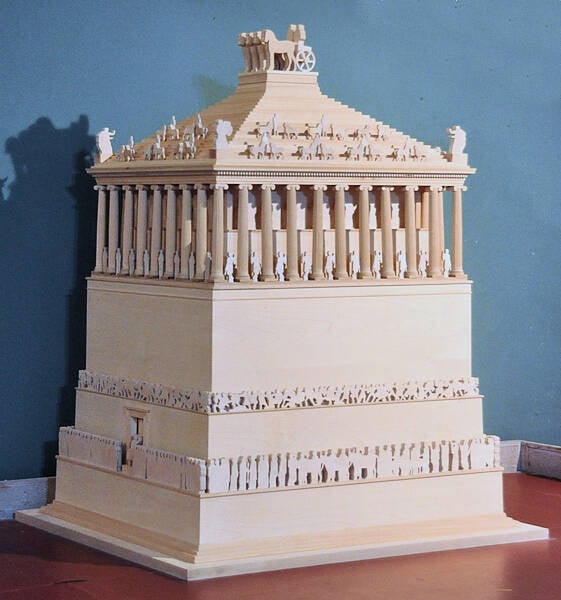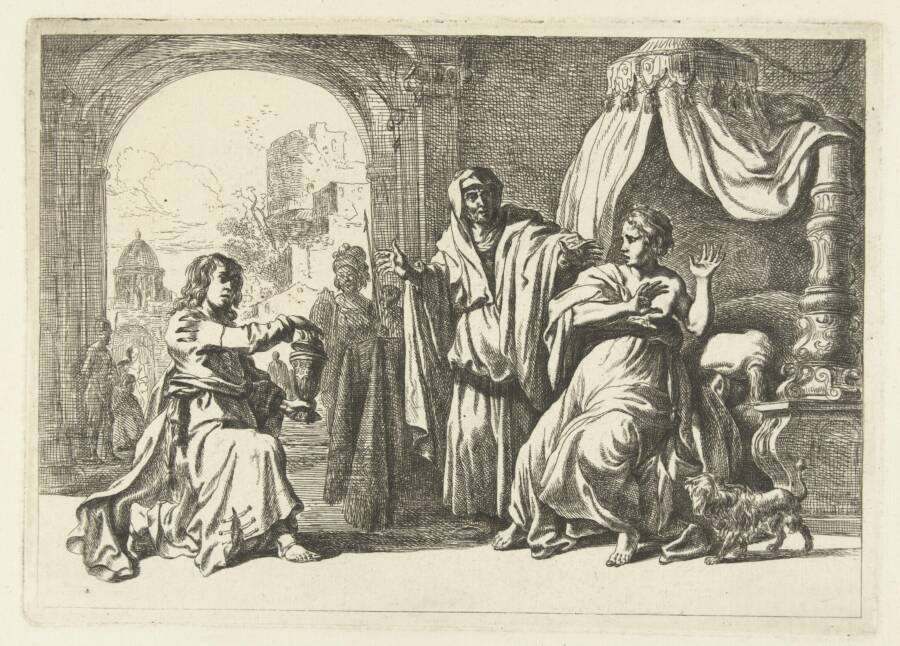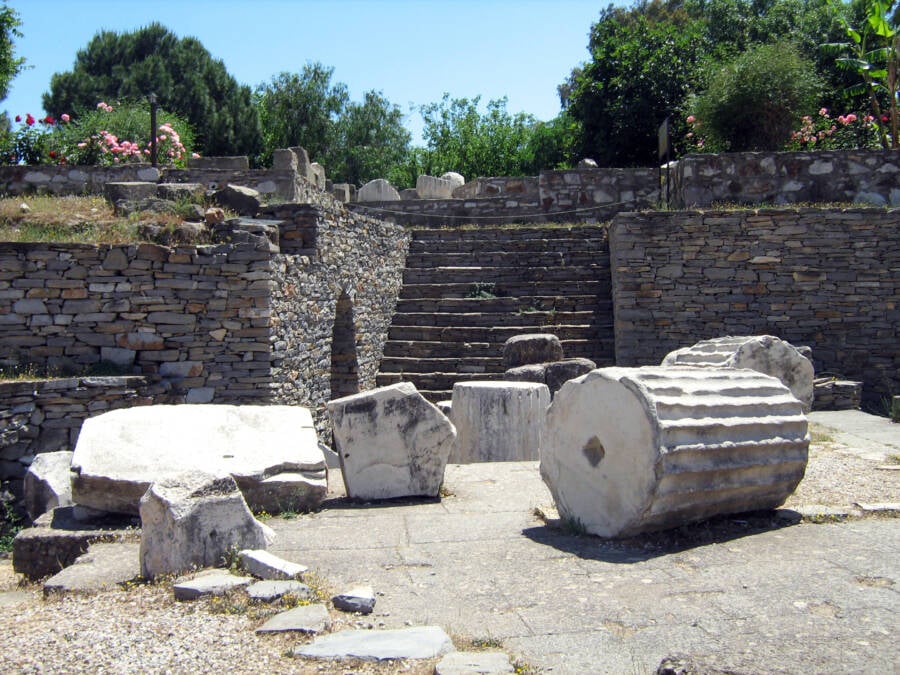A tomb built to honor an ancient king in modern-day Turkey, the Mausoleum at Halicarnassus was so ornate that it inspired the widespread use of the term “mausoleum.”

AF Fotografie / Alamy Stock PhotoAn illustration of the Mausoleum at Halicarnassus, one of the Seven Wonders of the Ancient World.
Every year in Bodrum, Turkey, tourists gather to view the remains of a great structure from antiquity. The site is little more than an earthen pit today, but it once hosted one of the Seven Wonders of the Ancient World: the Mausoleum at Halicarnassus.
This massive tomb solidified its reputation as one of history’s most impressive ancient structures due to its size and ornamentation. At about 140 feet tall and composed almost entirely of marble, the 4th-century B.C.E. structure was a marvel of ancient architectural achievement.
Although the mausoleum has crumbled into ruins, fragments of the structure remain — alongside hopes that it will one day be restored to its former glory.
The History Of Halicarnassus
Located on the eastern coast of what is now Turkey, the ancient city of Halicarnassus once stood as a cultural hub within the Greek empire.
Originally settled by the Mycenaean Civilization in the Bronze Age, the region was home to several groups throughout its history. Historians believe the city itself was established by Dorian Greeks in the Archaic Period.
By the 6th century B.C.E., Halicarnassus belonged to the Achaemenid Empire, or the First Persian Empire. During this period, the city birthed notable thinkers and artists such as Herodotus, the writer of The Histories, as well as rulers.
One such ruler was King Mausolus, a descendant of the Hecatomnid Dynasty who ruled Halicarnassus between about 377-353 B.C.E. During his 24-year reign, Mausolus and his sister-wife Artemisia II of Caria conducted extensive renovations of the city.

Carole Raddato / Wikimedia CommonsMassive statues of a woman and a man from the Mausoleum at Halicarnassus, believed to be Artemisia II and Mausolus.
In addition to building a modern wall to fortify the city, Mausolus commissioned several impressive works of architecture, including temples, a harbor, and a grand palace. He may have also had a hand in the development of the city’s grand theatre and a temple of Ares, the Greek god of war.
But Mausolus’ greatest contribution would only come after he died in 353 B.C.E.
The Construction Of The Mausoleum At Halicarnassus
After the death of her husband, Artemisia II ordered the construction of a massive tomb to honor King Mausolus and serve as the resting place for his remains.
The resulting tomb, the Mausoleum at Halicarnassus, was a blend of Greek, Near Eastern, and Egyptian design.

Wikimedia CommonsA plastic model of the Mausoleum at Halicarnassus, on display in the Bodrum Museum of Underwater Archaeology.
Allegedly taking inspiration from the Nereid Monument of Xanthos, Artemisia II wanted the tomb to showcase life in King Mausolus’ court and his hopes for the afterlife.
The marble structure stood about 140 feet in height, with a 24-step pyramid roof topped with a 25-foot-high sculpture of Mausolus and Artemisia II commanding a four-horse chariot. The building’s massive foundation was adorned with more than 400 painted sculptures of people, animals, and chariots. Thirty-six Ionic columns lined the building, as did elaborate friezes.
Roman scholar Pliny the Elder wrote this description of the Mausoleum at Halicarnassus in his work The Natural History:
“It is twenty-five cubits in height, and is surrounded with six-and-thirty columns, the outer circumference being known as the ‘Pteron’… Above the Pteron there is a pyramid erected, equal in height to the building below, and formed of four and twenty steps, which gradually taper upwards towards the summit; a platform, crowned with a representation of a four-horse chariot by Pythis.”
At its completion, the structure was so grand that its name “mausoleum” became synonymous with any stately above-ground tomb.
Unfortunately for Artemisia II, workers would not complete the structure before her death, circa 350 B.C.E. Her remains, like those of her husband, were placed in the unfinished tomb.

Penta Springs Limited / Alamy Stock PhotoArtemisia II receiving an urn containing the ashes of her deceased husband, Mausolus. Dated 1630 – 1683.
Following the deaths of the two monarchs, Halicarnassus underwent a devastating siege at the hands of Alexander the Great in 334 B.C.E. During this attack, much of the city was destroyed in a fire. While Halicarnassus was eventually renovated, it was never fully restored to its former glory.
In this state, the once-dazzling Mausoleum at Halicarnassus fell victim to time and crumbled into ruins.
The Lasting Legacy Of The Mausoleum
Leading up to its rediscovery in the 19th century, the Mausoleum at Halicarnassus was almost completely destroyed in a series of earthquakes that struck the region between the 11th and the 15th centuries C.E. In the 15th century, the Knights of St John removed pieces of the structure to build the nearby Castle of St. Peter in modern-day Bodrum, Turkey, further damaging the Mausoleum.
Then, in 1856, British archaeologist Charles Newton uncovered the remains of the mausoleum and began excavating the site. Newton brought many of the more intact pieces back to England, where researchers put them on display at the British Museum.
Today, the site where the Mausoleum at Halicarnassus once stood is a pit of ruins. Tourists can pay to receive personal tours of the plot where the grand tomb once overlooked the bay. Visitors to London can also see some of the pieces on display in the British Museum, including sculptures depicting horses, Halicarnassus elites, and mythical fights between the Greeks and Amazons.

Mausolumat Halicarneasus / Alamy Stock PhotoThe remains of the Mausoleum of Halicarnassus in Bodrum, Turkey.
For some, simply viewing the remains of this Wonder of the Ancient World is not enough. As of 2017, there are plans in the works to rebuild the Mausoleum of Halicarnassus in its original site.
According to the Hurriyet Daily News, a team led by renowned Danish archaeologist Poul Pedersen is working with the Mediterranean Countries Academy Foundation to rebuild the mausoleum and several other ancient structures in the city.
“There are many locals in Bodrum who don’t know that Herodotus was born in Bodrum and that the Mausoleum at Halicarnassus is listed as one of the Seven Wonders of the [Ancient] World,” said Özay Kartal, head of the Mediterranean Countries Academy Foundation. “This is why our priority is to restitute this mausoleum and open a way from the port to this place.”
After diving into the story of the Mausoleum at Halicarnassus, read about the Colossus of Rhodes and the Statue of Zeus, other Ancient Wonders of the World. Then, read about the mystery surrounding the existence of the Hanging Gardens of Babylon.





